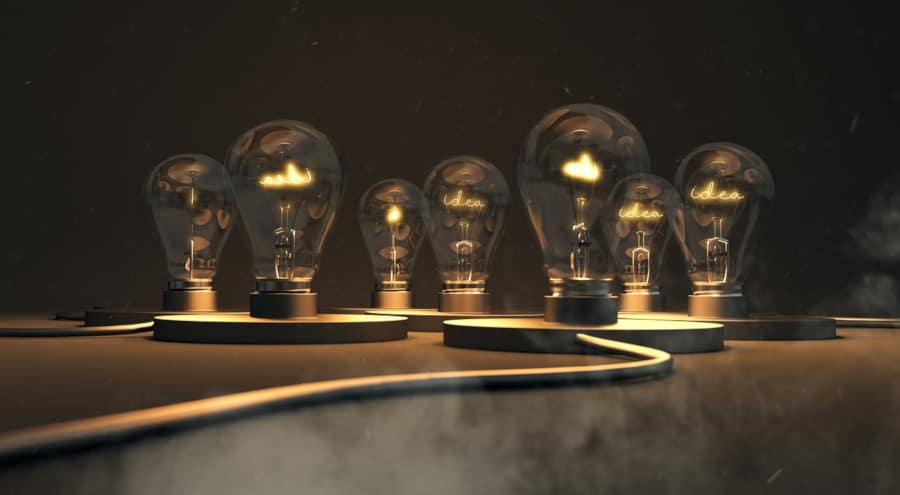The idea of visualization has been around for a long time just in different phrasing. The ancient Greek philosopher Aristotle described it as part of a process of fulfilling one’s ambition and attaining success.
Over the years, it has been closely associated with other mental exercises to boost one’s productivity, focus, and prosperity, such as the law of attraction. Despite the concept of visualization being over a millennia old, it is only in the seventies and eighties that it caught up as an effective method of achieving desired goals.
What is visualization?
Visualization involves creating a mental picture of the state are aiming and picturing yourself achieving it. Visualization can be defined as a mental rehearsal of an actual process or state. It calls on you to use your imagination to build an image with complete details of what you want in life and the process of getting there.
When accompanied with the corresponding emotion and more focus, it becomes a powerful tool for attaining self-improvement, good health, athletic performance, and general achievements. At first, most people are skeptical of how visualizing can be so effective and assume it is another technique hyped and without any basis, yet visualization is backed by science with different studies showing its astonishing impact.
Sports performance is the one field which has had a significant impact on the understanding of the power of visualization. In the 1970s, Russian athletes used the technique to achieve dominance in a variety of sports disciplines.
Dominant sports personalities like golfers Jack Nicklaus and Tiger Woods as well as former boxing champion Mohammed Ali have all confirmed that they had used visualization to significant effect by creating detailed images internally of their practices, their performances, and routines and then proceed to deliver the same on the actual stage.
Related reading: Unlock Your Inner Power: The Powerful Combination of Meditation and Visualization – Opens in new tab
Does visualization work?
This process is not just wishful thinking or successful individuals selling a new age fad. In one of the studies conducted to test visualization and its effect, it was found that the brain patterns which are active when weightlifting 100 pounds, were also vibrant when the weightlifter just imagined the process. In another research, a psychologist studied individuals who went to the gym with those who just had workouts in their mind.
The group which went to the actual gym gained 30% in muscle mass while the group that had only mental exercises had about half that with a 13.5% increase and they were able to maintain it for three months after the mental training.
All research done on the topic had concluded that visualization was close in its effectiveness as the actual physical practice and when the two were used together the effect was significantly higher compared to when relying on physical practice alone.
In another scientific study, an Australian psychologist tested the principle with a group of basketball players. They were divided into 3 groups; one of the group practiced free throws 20 minutes every day, another visualized themselves, whereby they were making the free throws without doing physical practice while the final group did nothing.
At the end of the research period, the group which had only visualized themselves making free throws recorded almost as much improvement as the group which did the physical practice.
All these studies and examples, including the Russian 1976 Olympic performance, illustrate how effective visualization can be.
Check out these vivid and compelling visualization videos, reinforced with subliminal affirmations for great results! – Opens in new tab

How visualization works
Visualization works thanks to the fact that your subconscious mind can be programmed because it cannot differentiate what is real and imagined. When you create an image of you doing something perfectly, the thought stimulates the neural patterns in your brain in a similar way physical action does. When this is done severally, other body systems like the muscles are trained to act and execute the action you have imagined in your mind.
Present studies now indicate just how powerful the mental images created in mind can be. All cognitive processes, including attention, planning, perception, memory, and motor control, are all impacted by visualization.
Understanding that you can influence your brain’s cognitive process sets you for the next stage of tapping into this potential. Like everything else, you will require constant practice and using the best methods to master the process and apply to your benefit.
Effective visualization techniques
While visualizing the future is a constant process of the brain, most of the time it happens, you may not be even aware of it. The problem is, if you are not aware of it, then you are not in control of it and directing the focus of the process.
You may end up filling your process with negative stimuli from the subconscious mind. The first step is to seek to lead your visualizations actively. The recreations in your brain are more like simulations of your future, and when you have a precise simulation, your physical body and mind can then replicate this in real life.
There are two kinds of simulations that you can create; outcome simulations and process simulations.
- The first kind of simulation allows you to visualize the outcome of events as you expect them to be.
- The second kind enables you to recreate the steps that will lead to the result.
According to the data from different studies, visualization is more effective when both simulations are employed, so you get to see the process as well as the whole outcome. It is also recommended that you create the visualizations with you as a participant instead of an observer since it is more effective this way.
You want to see the visualization through your eyes as take part in it and influence it not from a spectator’s point of view where you see yourself in it.
Related reading: What is a Vision Board, and How Does it Work?

To further increase the effectiveness herein are three strategies to employ;
1. Picture and describe the simulation
Visualizations are compelling when they seem real, and this calls for more details and perspective. So picture the process and outcome with as much related detail and comprehensive information as possible.
For example, the weightlifters in tests for visualizations pictured the whole gym atmosphere, the bench, the feel of the weight and the number of reps they were doing as well as their struggle and achievement.
Even a simple thing lie wanting a snack; to motivate your body and neural transmissions to formulate a real-life plan of how to get it, you have to imagine the taste feel and look as well as the desired satisfaction.
A detail image is not forgotten, and it is easy to repeat severally, which increases the signals shared in your brain as it works overdrive to make the thought a reality.
Make use of all your senses and knowledge about the focus of your simulation and keep adding the necessary details until it feels like you are experiencing the process in actual life.
2. Get the right Emotional Intensity
The right emotions and in the right intensity have to be attached to the process for it to appear more real and increase the levels of motivation for your mind to seek to realize the dream. You have to get excited about the desired outcome and process.
The subject of your mental imagery has to matter enough for you, whether it is a condition you want to change, an achievement you want to attain or an environment you want to create.
Deep feelings result in a belief, which further makes your simulation experiences more real but also improve your focus, clarity, and attachment to the simulation. You can also increase the emotional intensity by adding music that corresponds to the emotion you associate with the experience you are seeking to simulate.
Consider the whole feeling from the one you have as you desire and work towards attaining the outcome, to the satisfaction you get once you have the outcome you wished.
There is a course on Creative Visualization from the “Center of Excellence”, that can teach you how to use your imagination and tap into your subconscious mind. Take a look! (Aff.link – Use “LIGHTWARRIORSLEGION466 ” code for 70% off)
3. Exposure
Most of the things you can produce in your brain come from what is already there usually in the subconscious. You may find it difficult to simulate something that you have not been exposed to or have limited knowledge about it.
For example, imagining scuba diving when you have not been close to such an experience will not help you create a rich simulating experience. The same may apply to any achievement you may be seeking to simulate.
To increase your ability to fill in the extra details, you will need to collect additional information and familiarize yourself with the experience. It will include reading about it, watching videos, and even visiting locations where the action takes place.
Other techniques you can use to increase the effectiveness of your visualization process are;
• Pick a good time and location for your visualization and where nobody will disturb you, and you can create the right visualization environment.
• Relax and let go of all your tensions and other mental distractions. You can use breathing exercises to help you relax.
• Do visualizations with your eyes closed.
• Make visualizing a repetitive process and increase details with each session.
Conclusion
Visualization offers several benefits across all spheres of our life. Its effectiveness has been proven in several disciplines by scientific study and numerous successful people now use it.
To be able to make the most of it, you will need to follow the above techniques with more emphasis on having more details and attaching the right emotional intensity to the simulation.
Check out our recommendations at “Visualization Bookshelf” and many free resources at our “Free Library“
Stay in Touch
 Join our newsletter by using the forms on this website or click here!
Join our newsletter by using the forms on this website or click here! Follow us on Google News
Follow us on Google News Follow us on Facebook
Follow us on Facebook
Featured Image by Gerd Altmann from Pixabay







